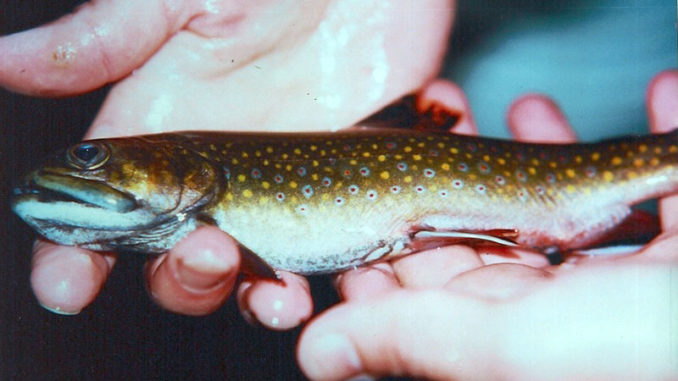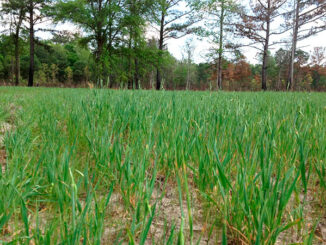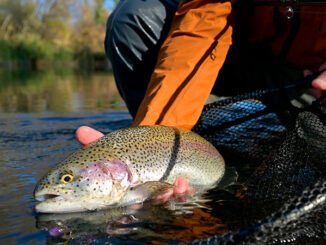
The Southern Appalachian strain of brook trout are true survivors and worth our protection
Isolated by glaciation, their range narrowed by centuries of development, their numbers reduced by the introduction of exotic species, brook trout have endured, either by design or by accident.
This ability to endure has elevated brook trout to a status that rival species, particularly rainbow and brown trout, can never hope to obtain. Brown and rainbow trout are widely dispersed in the southern Appalachians. But brook trout, aka “specks” or “speckled” trout by many mountain anglers — are found primarily in isolated, high-elevation, back-country streams.
They’ve been called trout forever, but they’re not a true trout, not like the rainbow or the brown or the cutthroat. They’re a subspecies of the char family that includes lake trout, bull trout, Dolly Varden and arctic char.
Brook trout are distinguished by their colorful markings: rose red spots surrounded by blue halos, worm-like markings on their backs called vermiculations and white-tipped fins
The average life span of a wild brook trout is three years. So they don’t get as big as browns or rainbows. Average size is around 7 or 8 inches. But some have been recorded in the 12- to 18-inch range.
They’ve been around forever, too, certainly before the first Europeans landed here. Even before indigenous people crossed the Bering Strait and settled in North America.
Mountain trout
For thousands of years, brook trout had mountain streams to themselves. Around the turn of the century, however, brook populations began an irreversible decline. Widespread logging, railroad construction, agriculture and unregulated fishing exacted heavy tolls on both numbers and habitat. Brook trout thrive in clean, cool water, and when water temperatures rose, where protective streamside vegetation was removed and sediment choked streams, brook trout numbers declined drastically. Stories abound, too, of fishers going to mountain streams and catching and keeping brook trout by the sack full.
Another killing blow was the introduction of exotic species. Rainbow trout from the western United States and brown trout from Europe were introduced to provide a more “exciting fishery.” Brook trout are not aggressive and not as prized as brown and rainbow for their fighting ability. Rainbow and browns also tolerate warmer and less pristine waters than brook trout.
Unable to compete for food with the larger and more aggressive fish, brook trout were displaced entirely or pushed back. Eventually, they inhabited mostly remote, high-elevation headwater streams.
The pure strain
In the past decade, fisheries biologists from the University of Tennessee, Auburn University and Western Carolina discovered a “Southern Appalachian” strain of brook trout. It is genetically different from the more widely dispersed Northern brook trout.
The Southern brook, biologists believe, evolved over thousands of years after the last glaciers retreated and left the long, narrow, high-country peninsula known as the Southern Appalachian Mountains, which extend from Virginia to northern Georgia. These fish adapted to a warmer climate and more acidic water than to which their northern kin are accustomed.
During their studies, biologists identified more than 400 streams that contain Southern Appalachian brook trout. Most of these streams were at elevations above 3,000 feet and had no records of ever being stocked. The Great Smoky Mountains National Park has dozens of streams that contain only wild brook trout.
In North Carolina, Panthertown and Greenland creeks are prime wild brook trout streams. The two streams form the headwaters of the Tuckasegee River in the Panthertown Valley area of Jackson County. Fishing is limited to artificial lures with a single hook, and all trout must be released. The trout in Panthertown Valley, although wild, are not Southern Appalachian brookies.
The major differences in the two strains are discernible only with the aid of a microscope. But it is another means of identifying Southern brook trout that will provide state and federal fishery managers with valuable information in deciding how to manage native brook trout waters.
If you are fortunate enough to catch a wild brook trout, admire its beauty, its endurance, and its uniqueness.
And let it go.
High-mountain trout
Most Southern Appalachian brook trout live in streams above 3,000 feet in elevation, where they were unaffected by logging early in the 20th century that decimated populations in lower elevations.




